I have a PHP file that makes an image. I have PHP configured to report errors on the screen. When I run the file in the PHP file in Firefox 23, it returns the Image cannot be displayed because it contains errors.
How can I find out what particular error is at fault in the image?
Here is the code:
<?php
$tfont[] = 'cylburn-webfont.ttf';
$cryptinstall = "./cryptographp.fct.php";
include $cryptinstall;
error_reporting(E_ALL ^ E_NOTICE);
srand((double)microtime()*1000000);
if ($_GET[$_GET['sn']] == "")
unset ($_GET['sn']);
session_start();
include('getcaptcha.php');
$question = getcaptcha();
$questionLen = strlen($question);
$cryptwidth = 25 * $questionLen;
$cryptinstall2 = "./cryptographp.cfg.php";
include $cryptinstall;
$cryptwidth = 900;
$cryptheight = 200;
// CrÈation du cryptogramme temporaire
$imgtmp = imagecreatetruecolor($cryptwidth, $cryptheight);
$blank = imagecolorallocate($imgtmp, 255, 255, 255);
$black = imagecolorallocate($imgtmp, 0, 0, 0);
imagefill($imgtmp, 0, 0, $blank);
$word = '';
$x = 10;
$pair = rand(0, 1);
$charnb = rand($charnbmin, $charnbmax);
for ($i=0; $i<= $questionLen; $i++) {
$tword[$i]['font'] = $tfont[array_rand($tfont, 1)];
$tword[$i]['angle'] = (rand(1, 2) == 1) ? rand(0, $charanglemax) : rand(360-$charanglemax, 360);
$tword[$i]['element'] = str_split($question)[$i-1];
$tword[$i]['size'] = rand($charsizemin, $charsizemax);
$tword[$i]['y'] = ($charup ? ($cryptheight/2) + rand(0, ($cryptheight/5)) : ($cryptheight/1.5));
$word .= $tword[$i]['element'];
$lafont = "fonts/" . $tword[$i]['font'];
imagettftext($imgtmp, $tword[$i]['size'], $tword[$i]['angle'], $x, $tword[$i]['y'], $black, $lafont, $tword[$i]['element']);
$x += $charspace;
}
// Calculate horizontal racadrage temporary cryptogram
$xbegin = 0;
$x = 0;
while (($x<$cryptwidth)and(!$xbegin)) {
$y = 0;
while (($y<$cryptheight) and (!$xbegin)) {
if (imagecolorat($imgtmp, $x, $y) != $blank)
$xbegin = $x;
$y++;
}
$x++;
}
$xend = 0;
$x = $cryptwidth-1;
while (($x>0) and (!$xend)) {
$y = 0;
while (($y<$cryptheight)and(!$xend)) {
if (imagecolorat($imgtmp, $x, $y) != $blank)
$xend = $x;
$y++;
}
$x--;
}
$xvariation = round(($cryptwidth/2)-(($xend-$xbegin)/2));
imagedestroy ($imgtmp);
// Create the final cryptogram
// Create the background
$img = imagecreatetruecolor($cryptwidth, $cryptheight);
if ($bgimg and is_dir($bgimg)) {
$dh = opendir($bgimg);
while (false !== ($filename = readdir($dh)))
if(eregi(".[gif|jpg|png]$", $filename))
$files[] = $filename;
closedir($dh);
$bgimg = $bgimg . '/' . $files[array_rand($files, 1)];
}
if ($bgimg) {
list($getwidth, $getheight, $gettype, $getattr) = getimagesize($bgimg);
$imgread = imagecreatefrompng($bgimg); break;
imagecopyresized($img, $imgread, 0, 0, 0, 0, $cryptwidth, $cryptheight, $getwidth, $getheight);
imagedestroy ($imgread);
}
else {
$bg = imagecolorallocate($img, $bgR, $bgG, $bgB);
imagefill($img, 0, 0, $bg);
if ($bgclear)
imagecolortransparent($img, $bg);
}
function ecriture()
{
// CrÈation de l'Ècriture
global $img, $ink, $charR, $charG, $charB, $charclear, $xvariation, $charnb, $charcolorrnd, $charcolorrndlevel, $tword, $charspace;
$ink = imagecolorallocatealpha($img, $charR, $charG, $charB, $charclear);
global $question;
global $questionLen;
$x = $xvariation;
for ($i=1; $i<$questionLen; $i++) {
if ($charcolorrnd) { // Choisit des couleurs au hasard
$ok = false;
do {
$rndcolor = 0;
switch ($charcolorrndlevel) {
case 1 :
if ($rndcolor<200)
$ok = true; break; // tres sombre
default : $ok = true;
}
} while (!$ok);
$rndink = imagecolorallocatealpha($img, $rndR, $rndG, $rndB, $charclear);
}
$lafont = "fonts/" . $tword[$i]['font'];
imagettftext($img, $tword[$i]['size'], $tword[$i]['angle'], $x, $tword[$i]['y'], $charcolorrnd ? $rndink : $ink, $lafont, $tword[$i]['element']);
$x += $charspace;
}
}
// Fonction permettant de dÈterminer la couleur du bruit et la forme du pinceau
function noisecolor()
{
global $img, $noisecolorchar, $ink, $bg, $brushsize;
switch ($noisecolorchar) {
case 1 : $noisecol = $ink; break;
case 2 : $noisecol = $bg; break;
case 3 :
default : $noisecol = imagecolorallocate ($img, 0, 0, 0); break;
}
if ($brushsize and $brushsize>1 and function_exists('imagesetbrush')) {
$brush = imagecreatetruecolor($brushsize, $brushsize);
imagefill($brush, 0, 0, $noisecol);
imagesetbrush($img, $brush);
$noisecol = IMG_COLOR_BRUSHED;
}
return $noisecol;
}
//Adding noise: points, lines and circles random
function bruit()
{
global $noisepxmin, $noisepxmax, $noiselinemin, $noiselinemax, $nbcirclemin, $nbcirclemax, $img, $cryptwidth, $cryptheight;
$nbpx = rand($noisepxmin, $noisepxmax);
$nbline = rand($noiselinemin, $noiselinemax);
for ($i=1; $i<$nbpx; $i++)
imagesetpixel($img, rand(0, $cryptwidth-1), rand(0, $cryptheight-1), noisecolor());
for ($i=1; $i<=$nbline; $i++)
imageline($img, rand(0, $cryptwidth-1), rand(0, $cryptheight-1), rand(0, $cryptwidth-1), rand(0, $cryptheight-1), noisecolor());
}
if ($noiseup) {
ecriture();
bruit();
}
else {
bruit();
ecriture();
}
// Create the frame
if ($bgframe) {
$framecol = imagecolorallocate($img, ($bgR*3 + $charR)/4, ($bgG*3 + $charG)/4, ($bgB*3 + $charB)/4);
imagerectangle($img, 0, 0, $cryptwidth-1, $cryptheight-1, $framecol);
}
// Transformations supplÈmentaires: Grayscale et Brouillage
// VÈrifie si la fonction existe dans la version PHP installÈe
if ($cryptgrayscal)
imagefilter($img, IMG_FILTER_GRAYSCALE);
if ($cryptgaussianblur)
imagefilter($img, IMG_FILTER_GAUSSIAN_BLUR);
/* If I comment out these lines, then the file runs fine, but
of course it does not return an image.
header("Content-type: image/png"); // This is the only header(...) that is
// included in the file. I am requesting
// the file directly with the URL.
imagepng($img);
imagedestroy ($img);
unset ($word, $tword);
unset ($_SESSION['cryptreload']); */
?>
If I comment out the header("content-type: image/png"), it gets rid of the error, but it returns nonsense to the browser that looks like this:

(All this said, I am less interested in fixing this particular image file than in understanding how to go about debugging errors/unexpected behavior in image-creation files. I want to learn how to fix problematic image-generating files on my own.)
